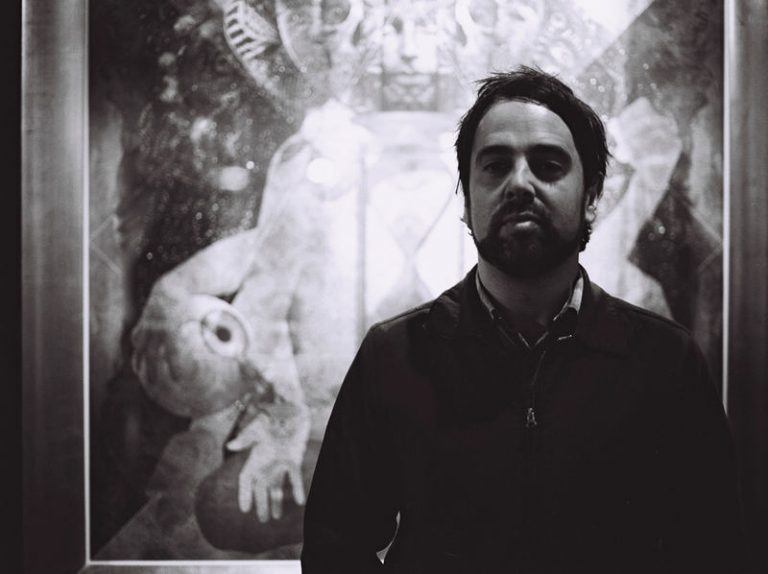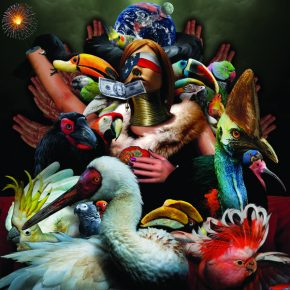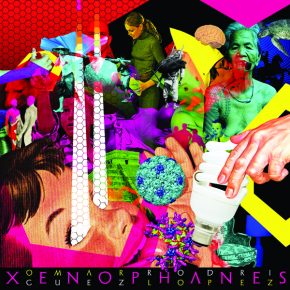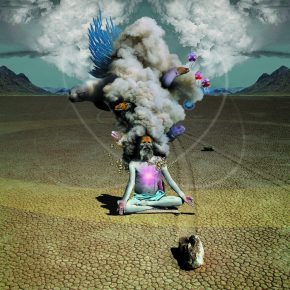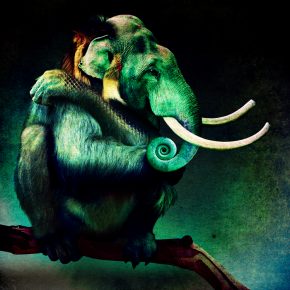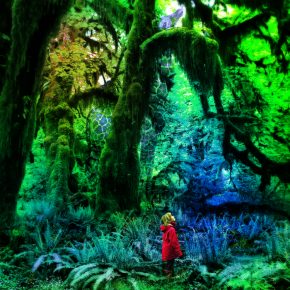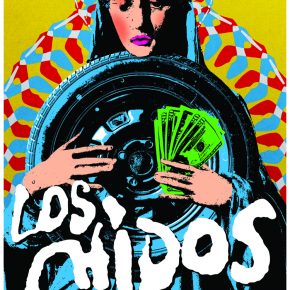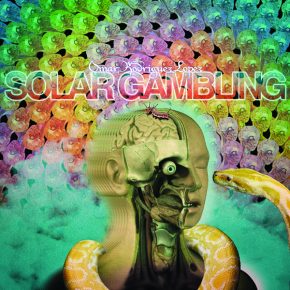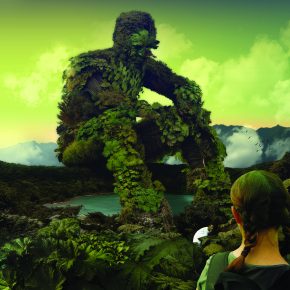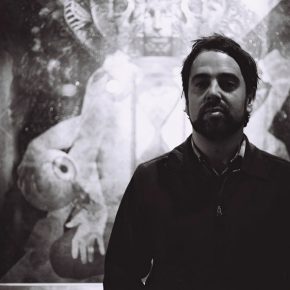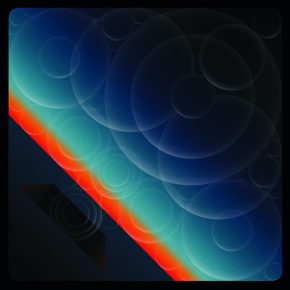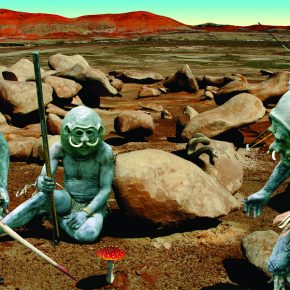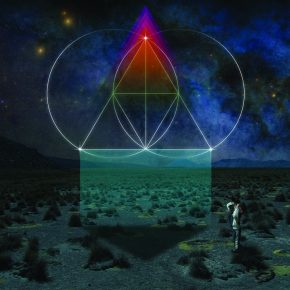Everyone possesses the ability to be artistically creative within several mediums yet not everyone succeeds at it. Sonny Kay is the exception, the anomaly. At an early age, Sonny realized he had artistic potential within music and art. As an adult, his talent and keen sense of self-awareness has helped him run a successful record label, Gold Standard Laboratories, for over a decade. Presently, Sonny finds himself re-incarnated working full-time as a visual and graphic design artist. The imagery he presents can often be interpreted as unconventional but the quality of his work is second to none. He is best known for designing album covers for bands such as The Mars Volta, Omar Rodriguez-Lopez, Le Butcherettes, amongst many others. I recently caught up with him on his day off to talk about the rise of GSL and his emergence as a visual artist.
How did Gold Standard Lab get started?
In the early 90’s I was living in Boulder, CO. I had been in a hand full of bands, punk and hardcore bands. There were a lot of bands in Boulder at the time, but not very much in terms of record labels. As my own bands toured, eventually we got known outside of the state. We started putting out records on labels and other places. That was cool and it was something I’m really grateful for, but I really wanted to run my own record label. I felt the urge to put out records. It just seemed like fun. I started putting out local bands in Boulder that weren’t necessarily touring or getting known outside of Colorado but to me were cool and were my friends. I wanted to do something that was inspired by cool labels at the time in California that were putting out all kinds of weird stuff. I always envisioned it as something that was not just a punk or hardcore label. Even tho my bands fit that narrow category, I wanted to put out stuff that was more eclectic than that.
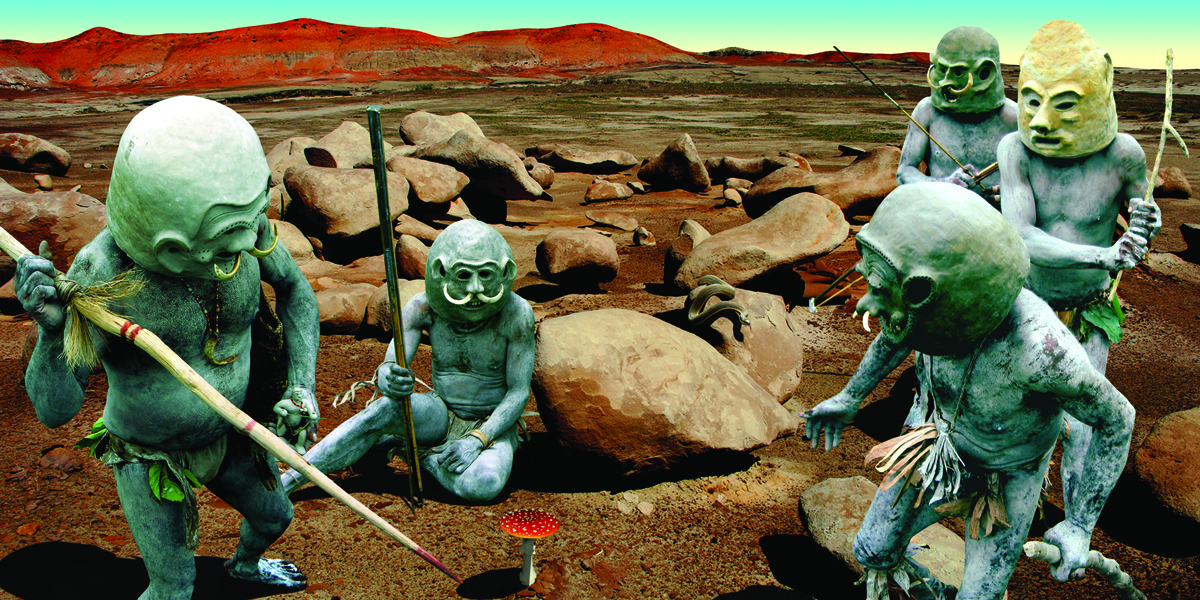 What punk and hardcore bands were you in?
What punk and hardcore bands were you in?
The first band I was in that toured was called Zavalas. We put out a couple of 7”s and toured around the southwest. That was followed by a band called Angel Hair. That was the first band I played here (El Paso) in 1994. We were on tour with Rancid and J Church. After that, I was in a band called The VSS. So many other things happened as a result of me being in that group; meeting people along the way or meeting other bands and, at the time, being unknowingly influential on people. After that I took a break for a few years and concentrated on doing the label. I was asked to join a band in 2003 which was a bunch of friends of mine from other old bands, all around my age, who had started this new thing. That was called Year Future. That lasted for about 3 years. I did another band called Optional Body for a year. Unfortunately, we never played a show or anything. That was the last band I was in that really did anything. I think its possible but I don’t anticipate being in another band anytime soon.
How did you get started with art and design? Was it something you were always doing?
When I was a kid I would draw a lot. My parents recognized I had a natural ability for it. My parents were pretty hands-off. They left my sisters and I to our own thing. I was enrolled in drawing classes when I was a kid but it was not anything serious or heavy duty. When it came to school there wasn’t a lot of pressure to be good at anything, other than to just do good in school. When it came to art, it was on me to do it or not do it. I never really developed any kind of serious discipline about it. By the time I got to college I was easily distracted, way more into music, bands, touring and putting on shows more than making art. Art seemed like the obvious thing I should be doing. I majored in painting and drawing and then switched to print making, screen printing, and lithography. I would do the most minimal amount of work required. I was more interested in managing the club on campus and putting on shows than I was doing art.
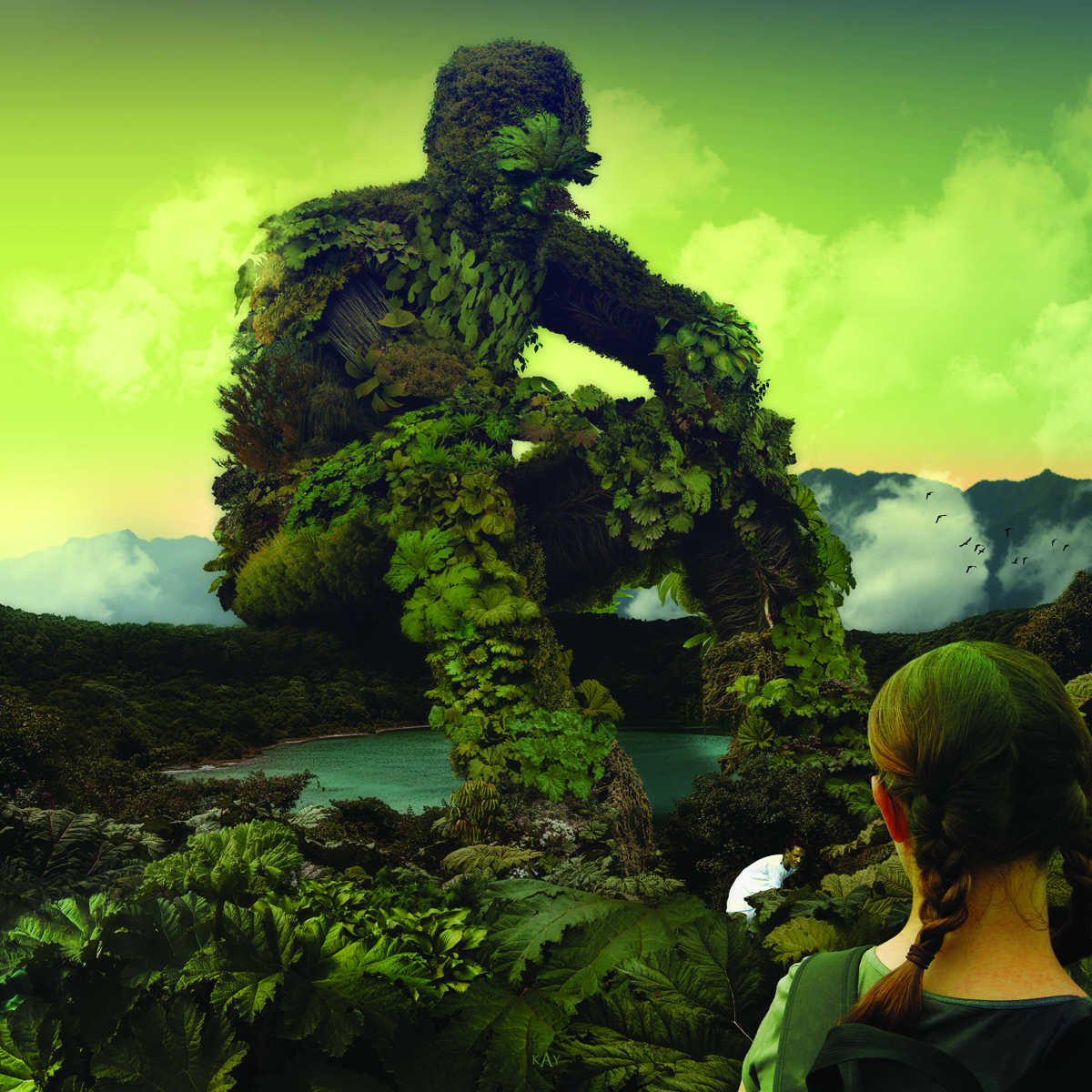 When GSL stopped operating, I imagine you were at a crossroads. Was that the moment you decided to pursue graphic design full-time?
When GSL stopped operating, I imagine you were at a crossroads. Was that the moment you decided to pursue graphic design full-time?
Yes. I had already started developing my skills as a designer during the course of running the record label for all those years; having to constantly develop print ads, web content, and designing stuff for my own bands. There was always something that needed to be designed. The label always had a little bit of a smart ass kind of attitude to it. That kind of crept up in the art in some sense, that sort of tongue-in-cheek or wise ass attitude dictated the way the art went. By the time we decided to stop doing the label in 2007 I was pretty adept to Photoshop. I definitely felt ready to, if not turn into a professional artist, if not make the jump to being able to sustain myself, at least be able to approach art more seriously and with more purpose I ever had before without any kind of distraction, without an obligation to something else that took president. Stopping the label was the first step in embracing the idea of being a working artist.
What projects did you work on after the label?
Fortunately, by then I had already been working with Omar (Rodriguez-Lopez) and The Mars Volta for about 6 years. He was beginning to put out a steady stream of solo releases. It was one of those things, by accident it coincided with one happening with the other. The first few of his releases coincided with me jumping off with this whole idea. From the very get go I had the privilege of being at the right place at the right time. As I grew and figured out what I was doing with this format, how I wanted to express myself, what kind of topics I wanted to deal with, I got to figure all that out in the course of his records. In hind sight, its an amazing opportunity and something I sometimes feel if I really dwell on it, or smoke enough weed or something, I’ll feel really overwhelmed by the fact that there are more than a few pieces I feel I let go prematurely. There are a few things I wish I could take back. Its a little difficult knowing how visible these things are sometimes. On the other hand, all I ever wanted to do when I was a kid was make record covers. The thing that excited me about that, other than the thrill of experiencing the art myself, was the idea of connecting with a lot of people.
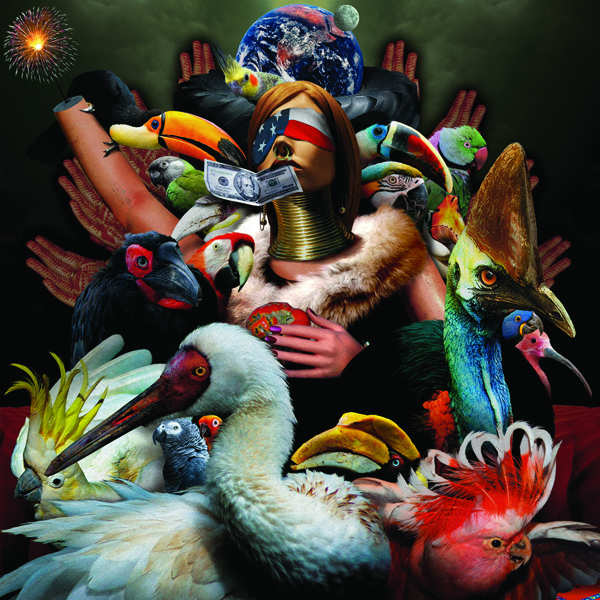 I was browsing your website and much of the imagery presented can be interpreted in many ways. Can you tell me about your work?
I was browsing your website and much of the imagery presented can be interpreted in many ways. Can you tell me about your work?
I have a tendency to get into a comfort zone with stuff and exhaust that area and it’s difficult for me to shake myself up. It’s been interesting working with Omar. His opinion of my work is much more neutral than my own. He can see it for what it is sometimes in the way that I can’t. I definitely credit him for insisting that I break out of these comfort zones from time to time and completely abandon all of my current ways of thinking and approaching things. Just purely as exercise, do a few things that are completely different. Sort of, having more of an agenda without having an agenda, if that makes any sense; trying to break open the possibilities of design and conceptual stuff by simplifying the whole process.
What would be an example of that?
For example, that record Xenophanes. Its a bright nonsensical collage. In my opinion, very stream of conscience, just throw a bunch of stuff together and figure out how it works kind of thing. Which, its not that I hadn’t done those things in the past, it’s just that I didn’t really gravitate towards doing stuff that way. I tend to conceptualize a single idea or I might envision a scene in my mind or something I’m trying to suggest in a visual way of doing that. I don’t utilize collage for collages sake very often. Doing something like that in a way was difficult to let go. I look at it now and it still seems really controlled and purposeful, but at the same time, in just a completely different way than anything that had come before it. That’s just one example. This kind of thing between he and I tends to function on all sorts of little subtle ways.
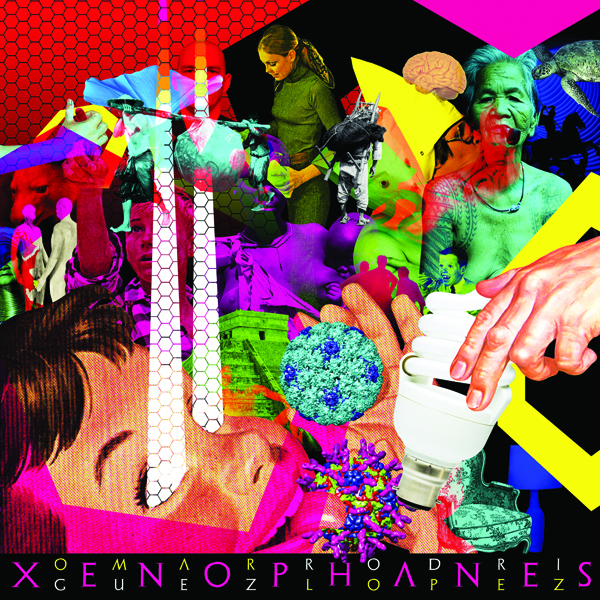
I consider him a really excellent collaborator because he is really diverse and constantly pushing himself and pushing everybody else. I feel like I’m constantly trying to avoid repetition on any one thing. Some of the things are bizarre but not everything I do is my own choosing. When it comes to stuff with Omar, there are things that have come out for him in particular that I wouldn’t necessarily design myself or design for anybody else. There has been things that he has insisted on or images that he’s liked along the way. Those have have been an odd thing to explain sometimes because he is willing to take a lot of risks visually.
I, personally, couldn’t be more happy to be part of this. I look back now and think about my motivation to putting out records in the first place, or why I even got into punk and hardcore, its wanting to be part of something. I still feel that way and it still feels good. Especially when its something that touches people and is constantly changing. For me, thats what keeps it exciting.


